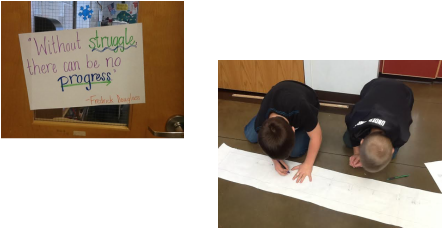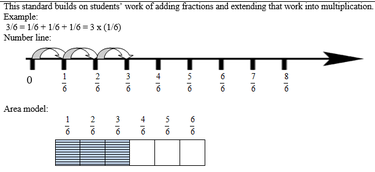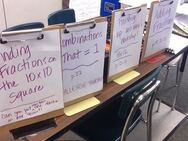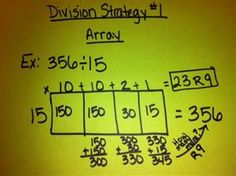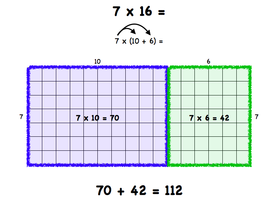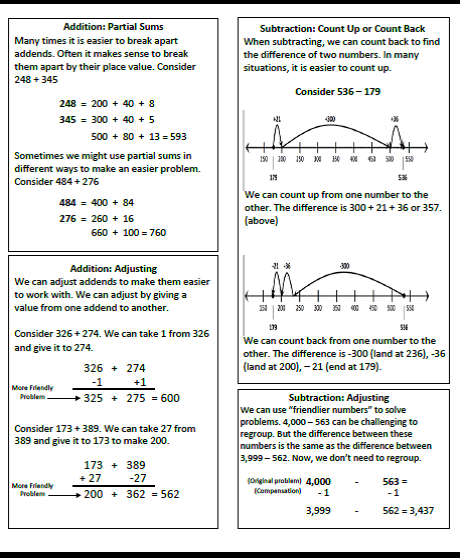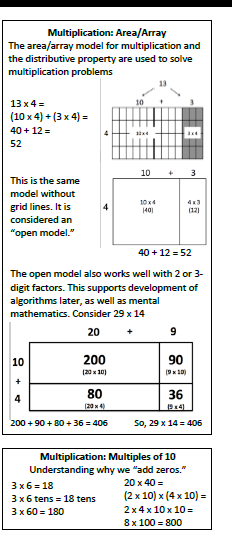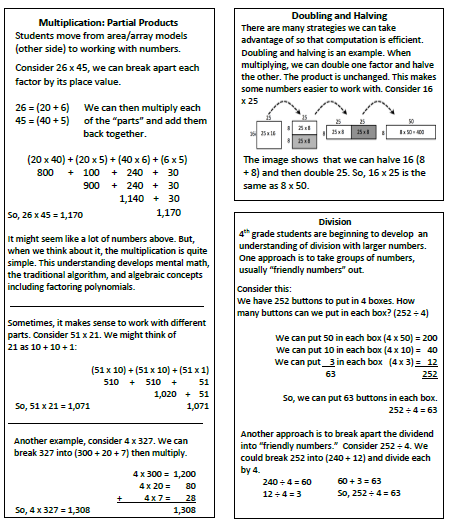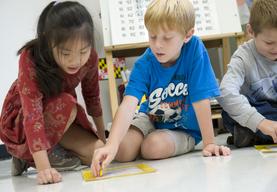
You can learn about what mathematical ideas your child is working on by exploring the resources found in each of the nine weeks below. You will find video clips, examples of student work, and games/activities to try at home!
Fourth Grade Unpacking Document
Major Work Standards
Fourth Grade Discussion Videos
Fourth Grade Parent Information from NCDPI
Fourth Grade Unpacking Document
Major Work Standards
Fourth Grade Discussion Videos
Fourth Grade Parent Information from NCDPI
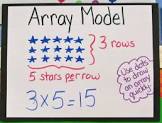
First Quarter
During the first nine weeks, your fourth graders will extend meanings for the operation of multiplication. They will work on finding the multiples and factors of a number and categorizing numbers as composite or prime. They will use area model ( arrays) to model multiplication and to represent the application of the distributive property. They will connect multiplication to division and develop strategies for dividing by a one digit divisor. Fourth grade students will also work with multiplicative comparison problems and develop strategies for solving and notating multiplicative comparisons. The traditional US Algorithm for multiplication is studied in fifth grade after students have had ample opportunities to develop a deep understanding of the distributive property and multiplicative situations. Accessible algorithms are show below in the solution strategies section. Dot images present a visual representations that support development of the operation of multiplication. Videos on the Array Model Representing Multiplication with an Array Multiplying with an area model Multiplicative Comparison Online Games Factorize Chairs Factor Game Times Tables Product Game Games Multiple Turn Over Game Multiple Turn Over Cards Books to Read One Hundred Hungry Ants A Remainder of One Building Fluency Practicing Multiplication Combinations Multiplication Cards Student Work Samples |
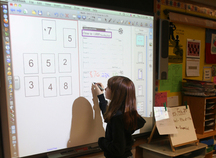
Second Quarter
During the second nine weeks, your fourth graders will be developing ideas about the attributes of 2-D and 3-D shapes, and how these attributes determine their classification. They will work with applying area and perimeter formulas to real world situations, the measurement of angles and the understanding of angles as rotation as well as geometric shapes made when two rays share an endpoint. They will continue developing ideas about the distributive property as they decompose numbers and combine partial products. Fourth grade students extend their strategies for solving division problems ( the US Algorithm for division is studied in sixth grade). They use partial quotients and multiplication to solve problems. An important part of the work with division is interpreting the remainder. Example: There are 25 dozen cookies in the bakery. What is the total number of cookies at the bakery? Student 1 Student 2 25 x12 25 x 12 I broke up 25 into 5 groups of 5 I broke 12 up into 10 and 2 5 x 12 = 60 Since there are 5 groups of 5 25 x 10 = 250 in 25 25 x 2 = 50 60 x 5 = 300 250 +50 = 300 Student 3 25 x 12 I doubled 25 and cut 12 in half to get 50 x 6 50 x 6 = 300 What do we do with the remainder? There are 126 students that need to be seated in the cafeteria. Each table will hold 8 students. How many tables will we need? |
Solution Strategies
